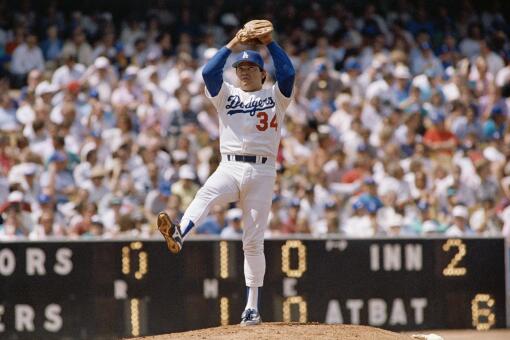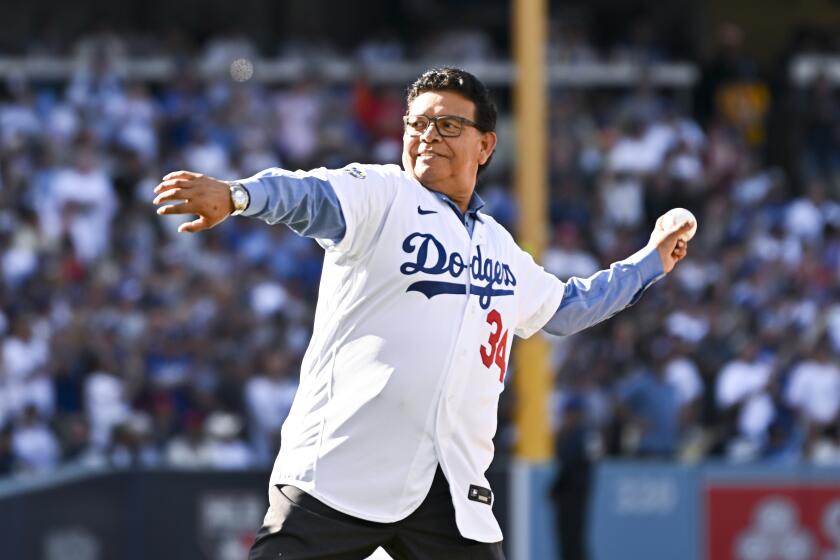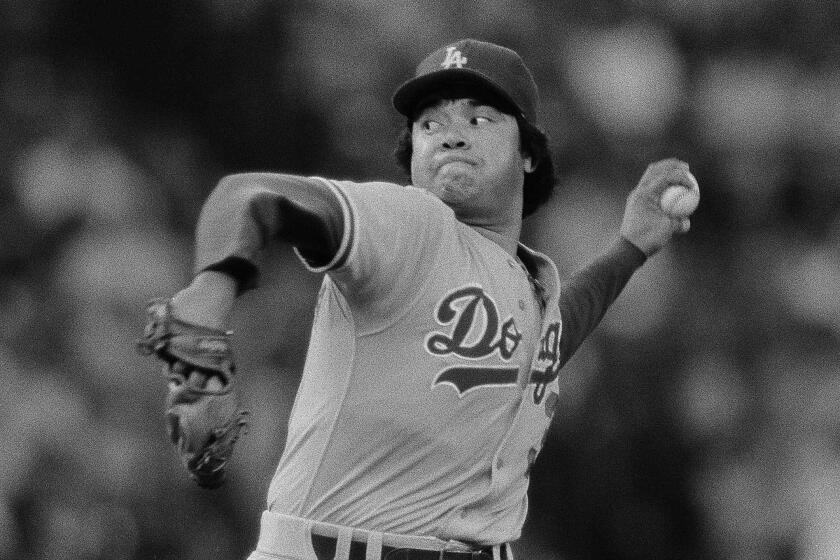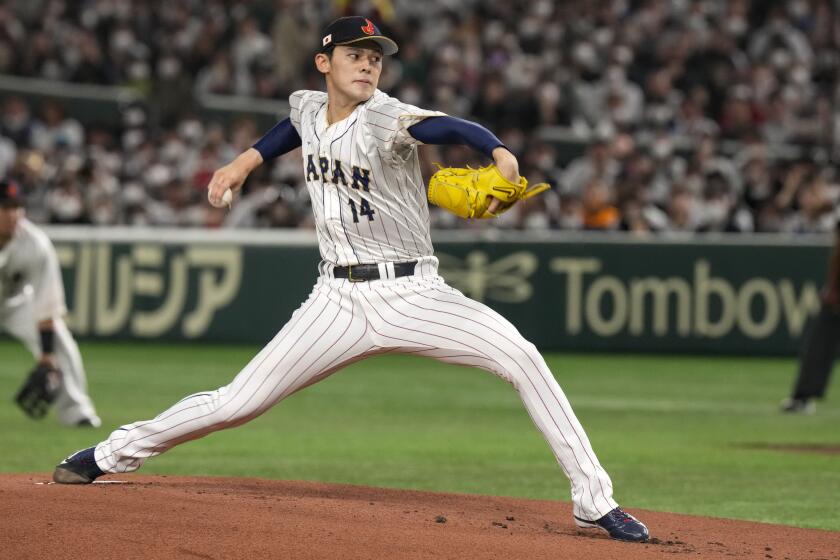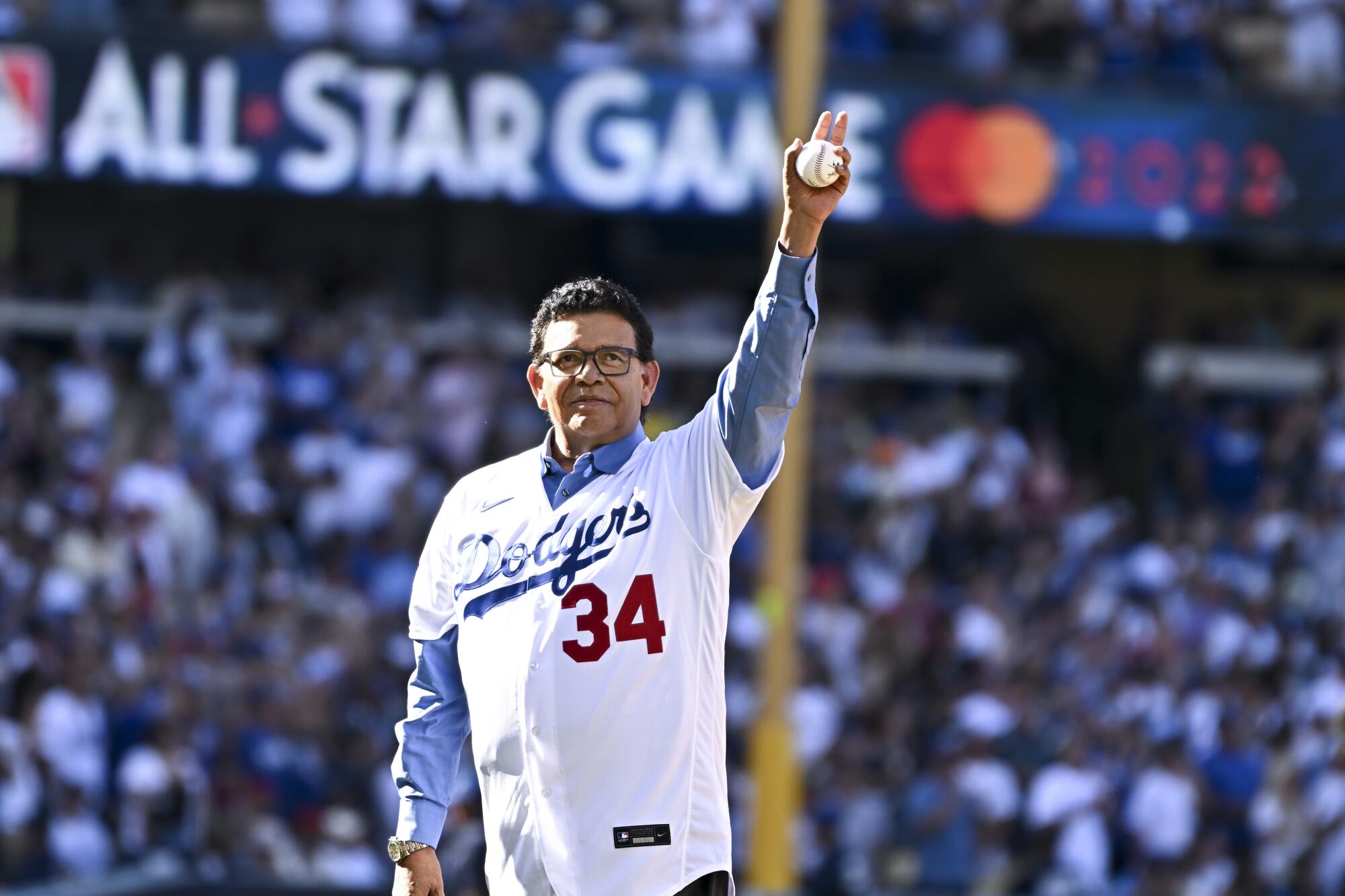
It is more than digits on a uniform, it is a symbol of community, a monument to connection, a deep blue landmark that has long bonded a city and its baseball team.
Thirty-four is the Dodgers’ true magic number.
And now, finally, officially, gloriously, it will live forever with Fernando Valenzuela.
In a long-awaited move that will rock Chavez Ravine at its Fernandomania roots, the Dodgers announced Saturday that they are retiring Valenzuela’s No. 34.
It is an appropriate honor for arguably the most impactful Dodger in Los Angeles franchise history. It is the fulfillment of the persistent wishes of the passionate fan base that Valenzuela helped create.
It’s about damn time.
Fernandomania
Relive Fernandomania through The Times’ documentary series that examines star pitcher Fernando Valenzuela’s impact on the Dodgers, Major League Baseball and the Latino community in Los Angeles.
“The single question I get asked more than any other is, ‘When are you going to retire Fernando’s number?’” said Stan Kasten, the Dodgers’ president and chief executive, in an interview with the Los Angeles Times. “The answer is, this year.”
The stoic Valenzuela was clearly moved by the honor.
“It’s an amazing feeling,” Valenzuela said. “I never thought it would happen. I thank the fans and the Dodgers for making it happen.”
The announcement was made at the Dodgers’ FanFest celebration on a stage in right field at Dodger Stadium.
Kasten’s proclamation, with Valenzuela at his side, was met with surprised cheers and shrieks from several thousand fans who surged toward the stage while holding up smartphones and Valenzuela jerseys.
“Thank you to all the fans for your support,” said Valenzuela. “It’s great.”
He then addressed the crowd in Spanish, saying, “I give thanks to all of you. This was possible because of all the support you gave me.”
What took so long? Blame it on tradition. Seriously. Even though Valenzuela has been retired for 26 years, he has been prevented from participating in the Dodgers’ greatest tradition because of, well, the tradition.
It has long been an unofficial club policy to only retire the numbers of those Dodgers who are in the Baseball Hall of Fame. With the exception of the retirement of infielder Jim Gilliam’s No. 19 in 1978 after his sudden death from a massive brain hemorrhage, every Dodgers ownership group has abided by that mandate.
Jaime Jarrín, Julio Urías, Dave Roberts and Max Muncy praise the Dodgers’ decision to recognize the impact Fernando Valenzuela had on the franchise.
Valenzuela only lasted two years on the Baseball Hall of Fame ballot before being dropped for lack of votes, meaning he seemingly never had a chance to add his No. 34 to the list of 11 current retired numbers.
So what changed? The climate around an increasingly proactive fan base changed. The noise around the 40th anniversary of Fernandomania lingered. The obvious exclusion finally became too great for the Dodgers to ignore.
In an underground campaign inspired by longtime clubhouse manager Mitch Poole, after Valenzuela left the team in 1991 no new players have been allowed to wear the No. 34. In an overt campaign by the fans, Kasten has been confronted with the appeal daily during his walks around the stadium. When the team unveiled a statue of Sandy Koufax last summer, the questions only intensified.
Considering Guggenheim Baseball Management has made the team’s history a cornerstone of their stewardship, it became an obvious fix. Even if it meant breaking their own rules, the Dodgers realized their choice was really no choice at all. The small-town Mexican kid with the funny delivery and vicious screwball overcame the odds again.
“When we came here, we respected the history of the franchise, and that included respecting its policies,” said Kasten of Guggenheim’s purchase in 2012. “But every now and then we also sit down and review those policies … and after all of the public clamor for Fernando … that is the single reason that pushed this decision way over the edge … it’s about what this means to a great number of fans.”
The Dodgers haven’t retired Fernando Valenzuela’s number, but his impact on baseball, especially among Latinos in L.A., makes him Hall of Fame worthy.
The love for Valenzuela is so great, his number retirement celebration will last an entire weekend, from Aug. 11-13, during a raucous series in which the Colorado Rockies will be mere props after the number is retired on Aug. 11.
His No. 34 will be unveiled on the stadium wall above left field. He will be shown on the videoboard throughout the weekend as he works his job with the Dodgers’ Spanish-language broadcast team. The cheers will probably be unlike anything previously heard at Chavez Ravine. The quiet truth will, at last, become loudly evident.
Fernando Valenzuela will be certified as the most popular Dodger player in Los Angeles franchise history.
“No question his role is up there with anybody’s in terms of getting fans engaged, getting fans involved, and this has lasted long, long after he stopped playing,” said Kasten. “Fernando’s time with the Dodgers has resonated right through the years up until today.”
One could even surmise that Valenzuela’s singular effect on the Dodger franchise has been greater than any baseball player on any team anywhere.
Beginning with that magical 1981 season, when a 20-year-old from Etchohuaquila, Sonora, Mexico became the only player to win the Cy Young and rookie of theyear awards in the same year, Valenzuela constructed an enduring bridge between the franchise and its diverse fans.
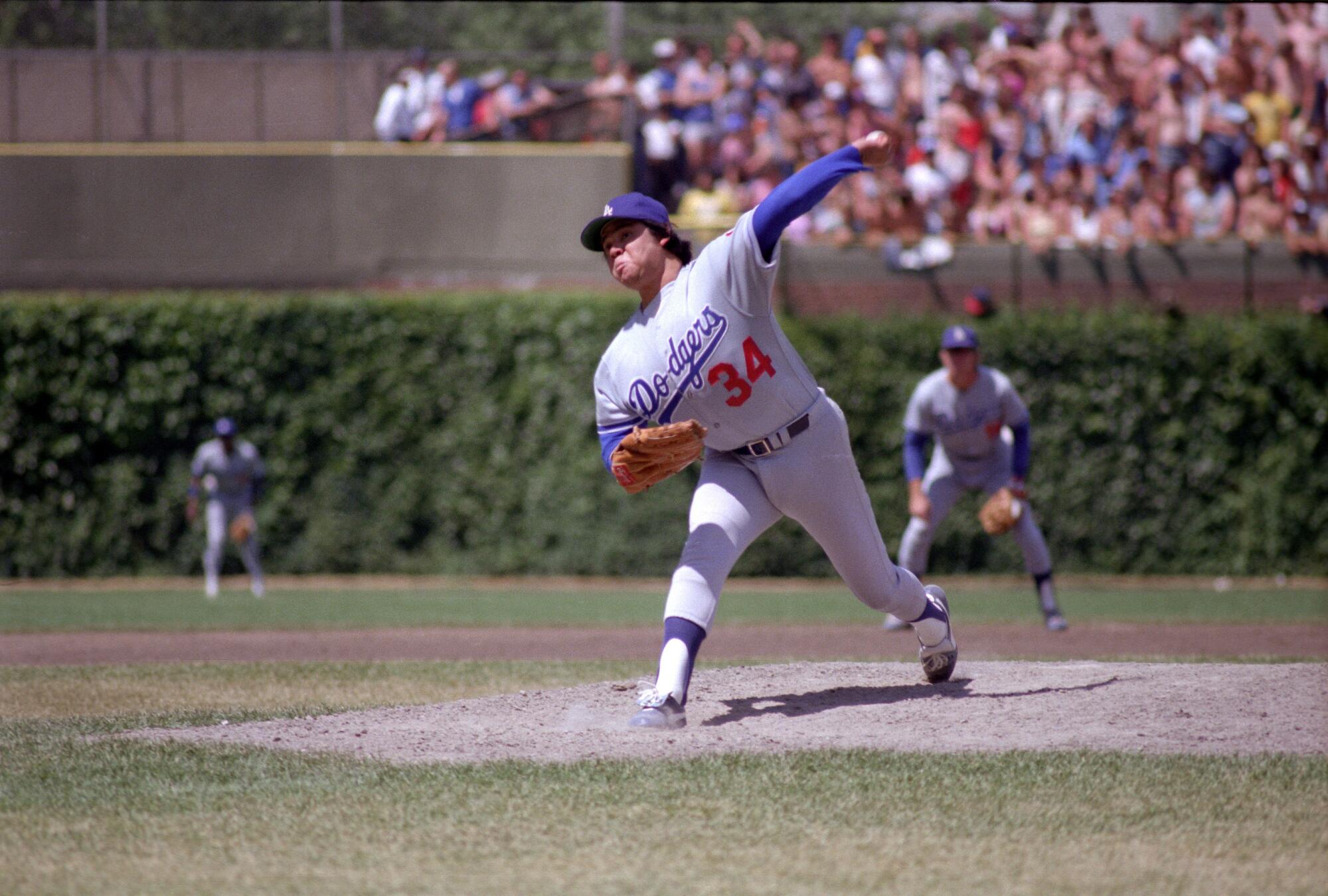
For Mexicans and Mexican Americans during a time when Los Angeles was undergoing great ethnic upheaval, Valenzuela became a source of pride. For longtime Dodgers fans who have been exposed to few Mexican players, he became a symbol of the wonders of inclusion.
Valenzuela brought the Dodgers into formerly ignored immigrant communities, and then brought those communities into Chavez Ravine.
More than 40 years later, Dodger Stadium looks more like Los Angeles than any other sports venue in this city. Its largely Latino fan base is a result of growth that began with Valenzuela. It is a testament to his enduring charm. It has become the House that Fernando Built.
Check out the backs of the uniform jerseys worn by fans. Even though many never saw him play, “VALENZUELA” is rivaled by only “KERSHAW” and “KOUFAX.”
Many visitors from out of town were surprised when Valenzuela was accorded one of baseball’s highest honors by throwing out the first pitch at Dodger Stadium in last summer’s All-Star Game.
The roar should have told them everything.
Baseball folks from outside of Southern California have never quite understood the Valenzuela Effect, witness the fact that he received only 6.2% of votes when he was first eligible for the Baseball Hall of Fame in 2003, and just 3.8% of votes the following year when he was dropped from the ballot. His career record of 173-153 with a 3.54 ERA is deemed average, and he never won a major award or participated on a World Series championship team after the 1981 Fernandomania.
But the numbers don’t even begin to tell the story of the connection he forged, and the doors he opened, and the city he bonded. He should be in Cooperstown for contributions that have been unmatched in baseball history. His next chance will be in three years when he can be considered by the Hall of Fame’s Contemporary Baseball Era Players Committee. Maybe this latest Dodger honor will help.
“If you’re talking about impact to a city, to a franchise, to a fan base, it’s hard to imagine a player with a greater impact anywhere,” said Kasten.
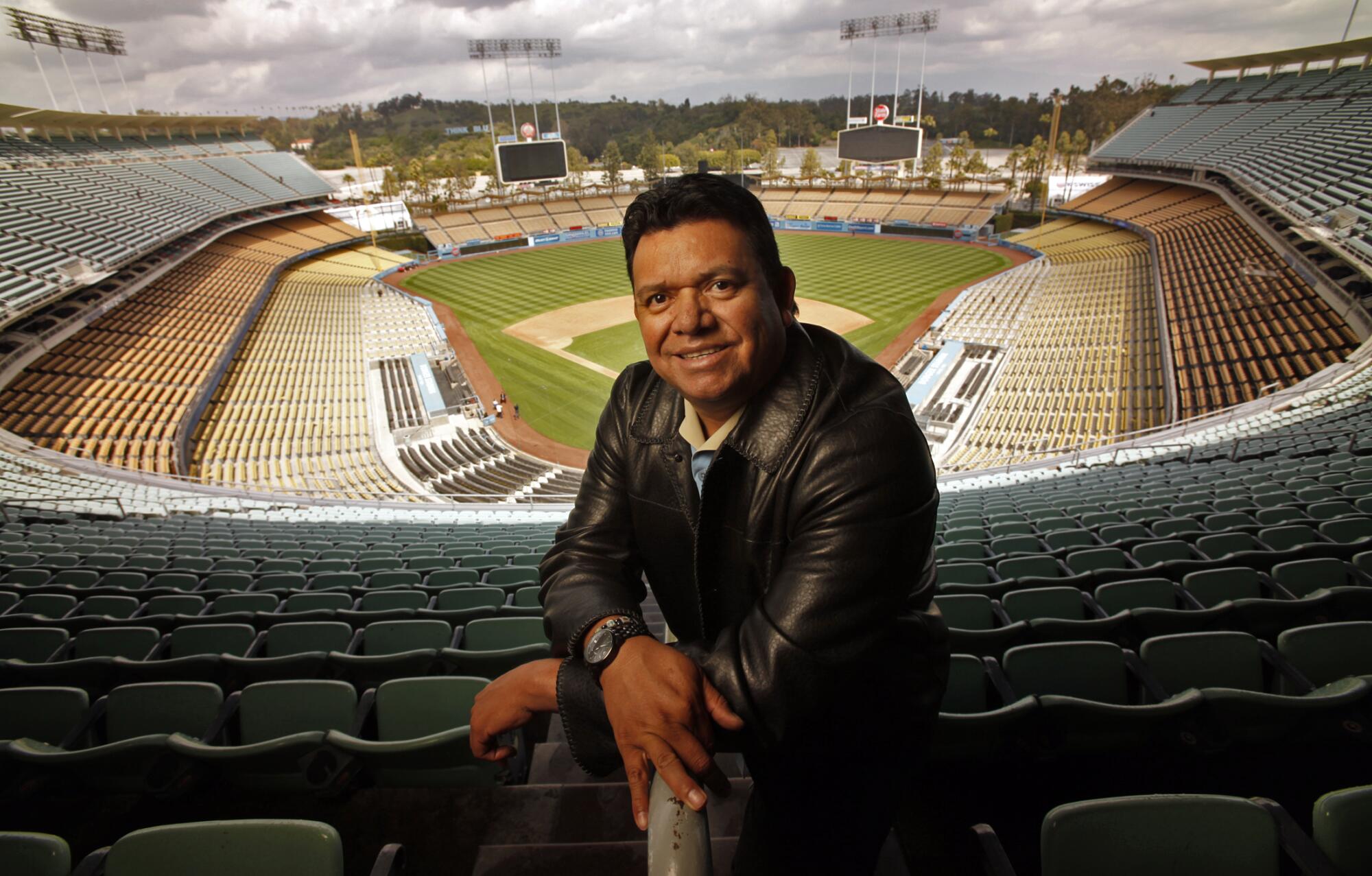
Fittingly, in his final season with the Dodgers in 1990, Valenzuela bid the perfect farewell by throwing his only no-hitter, the St. Louis Cardinals’ Pedro Guerrero grounding into a game-ending double play.
More than three decades later, Valenzuela will finally be allowed to give the Dodgers the shirt off his back to hang in Chavez Ravine for eternity.
No. 34 is retired, and its magic lives on.
More to Read
Are you a true-blue fan?
Get our Dodgers Dugout newsletter for insights, news and much more.
You may occasionally receive promotional content from the Los Angeles Times.

